RARE! WWII VII Fighter Command P-51 Mustang Pilot Pakin Islands (Caroline Group) "Kneepocket" Flight Combat Map

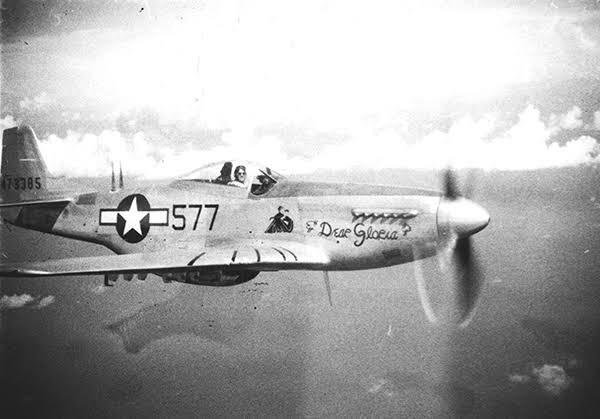
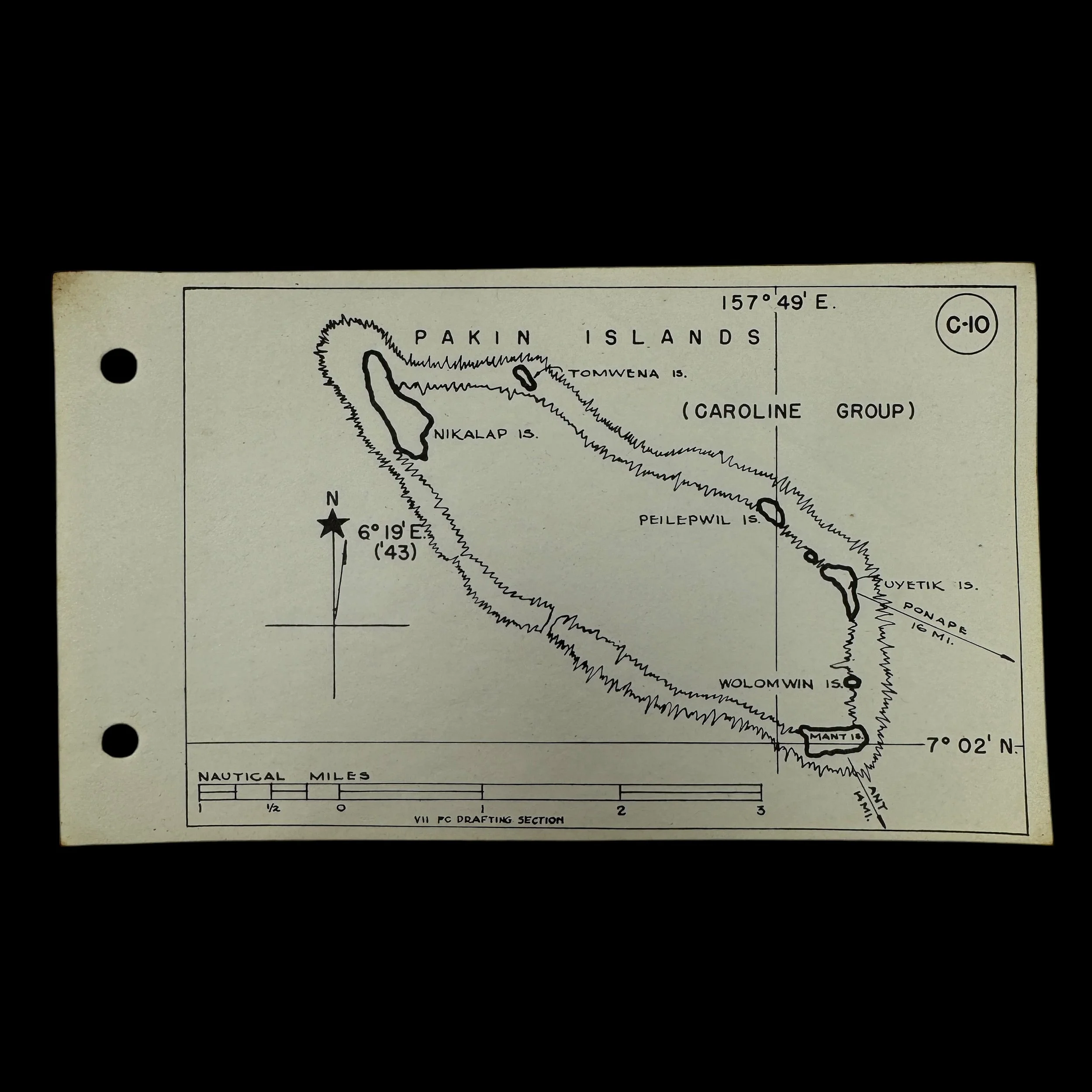

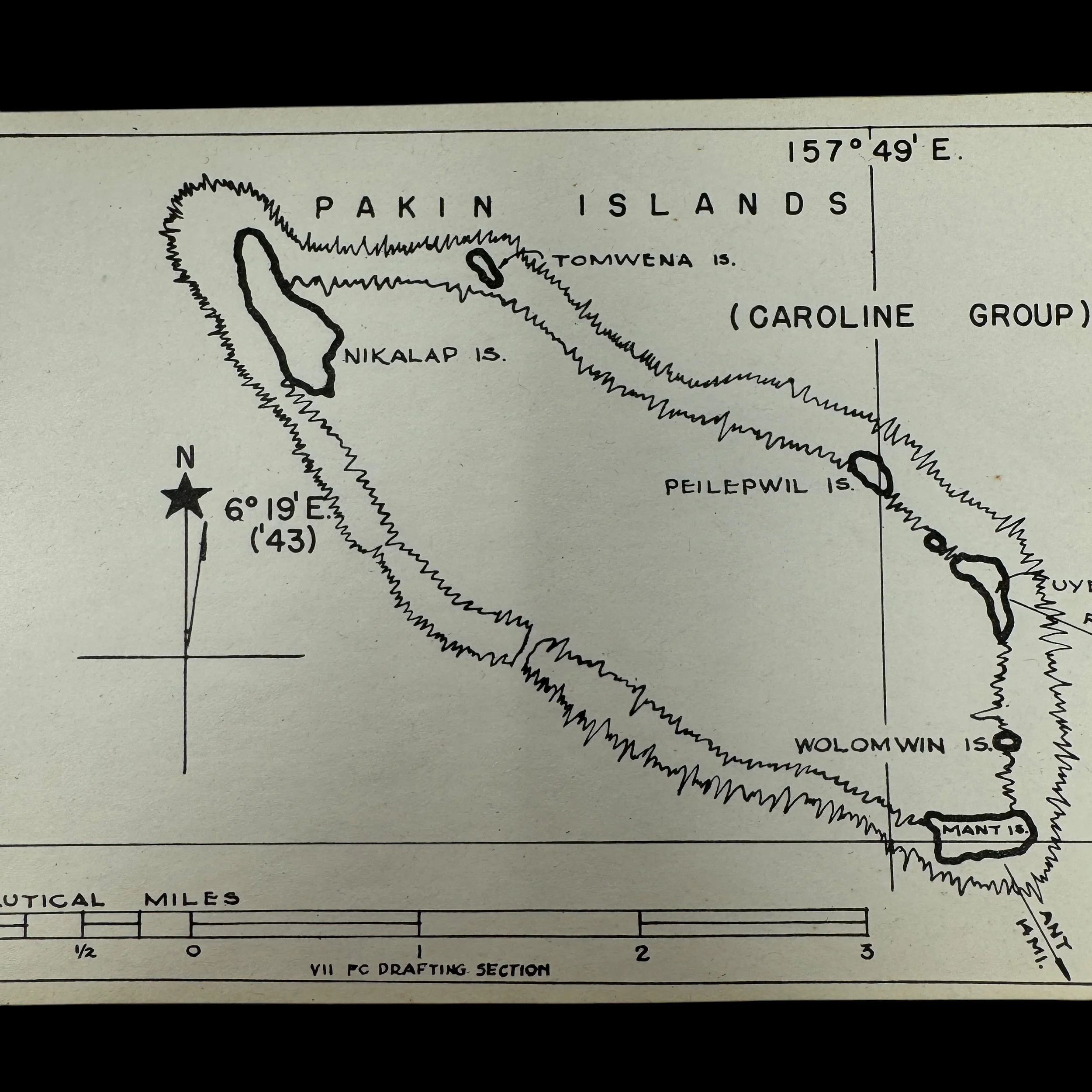
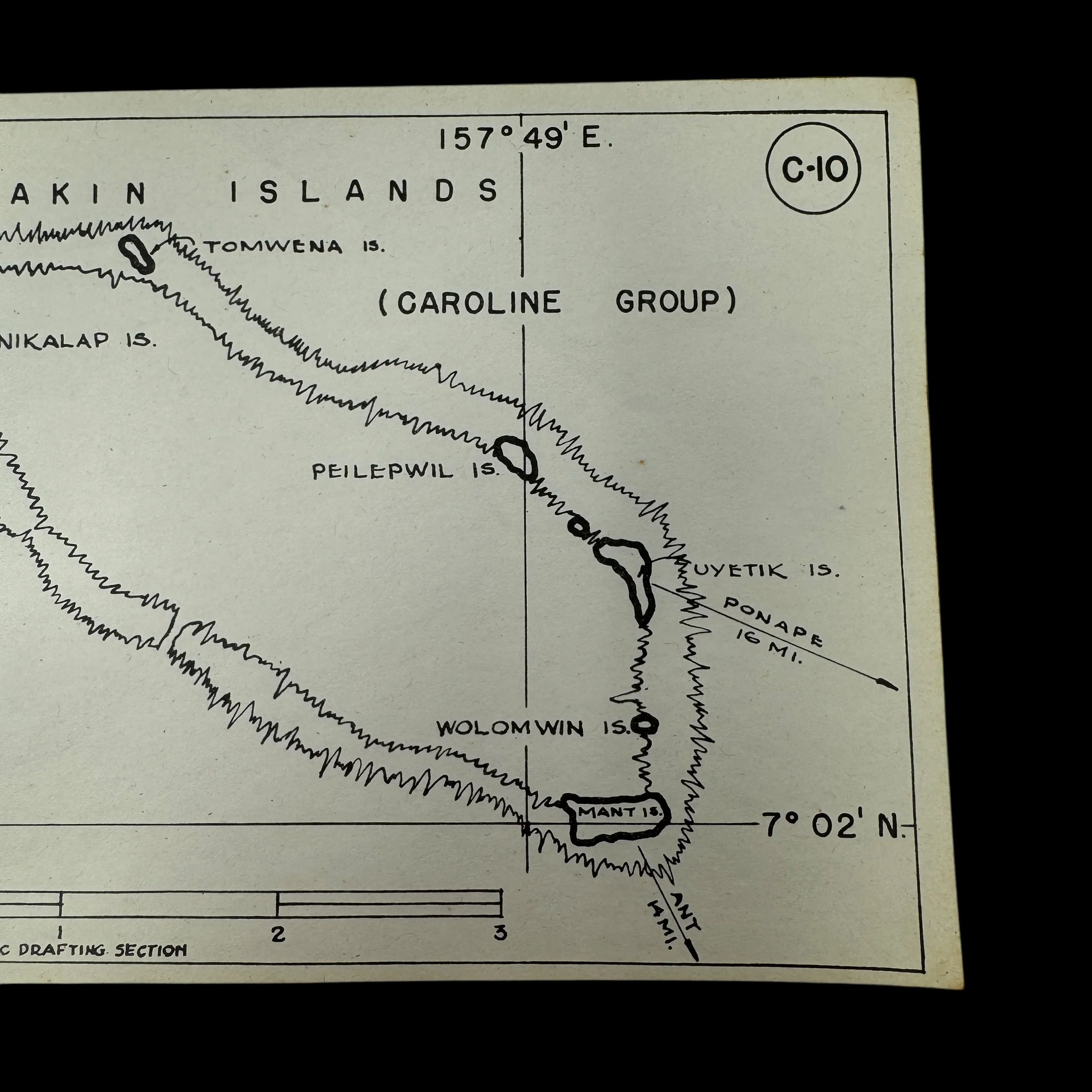
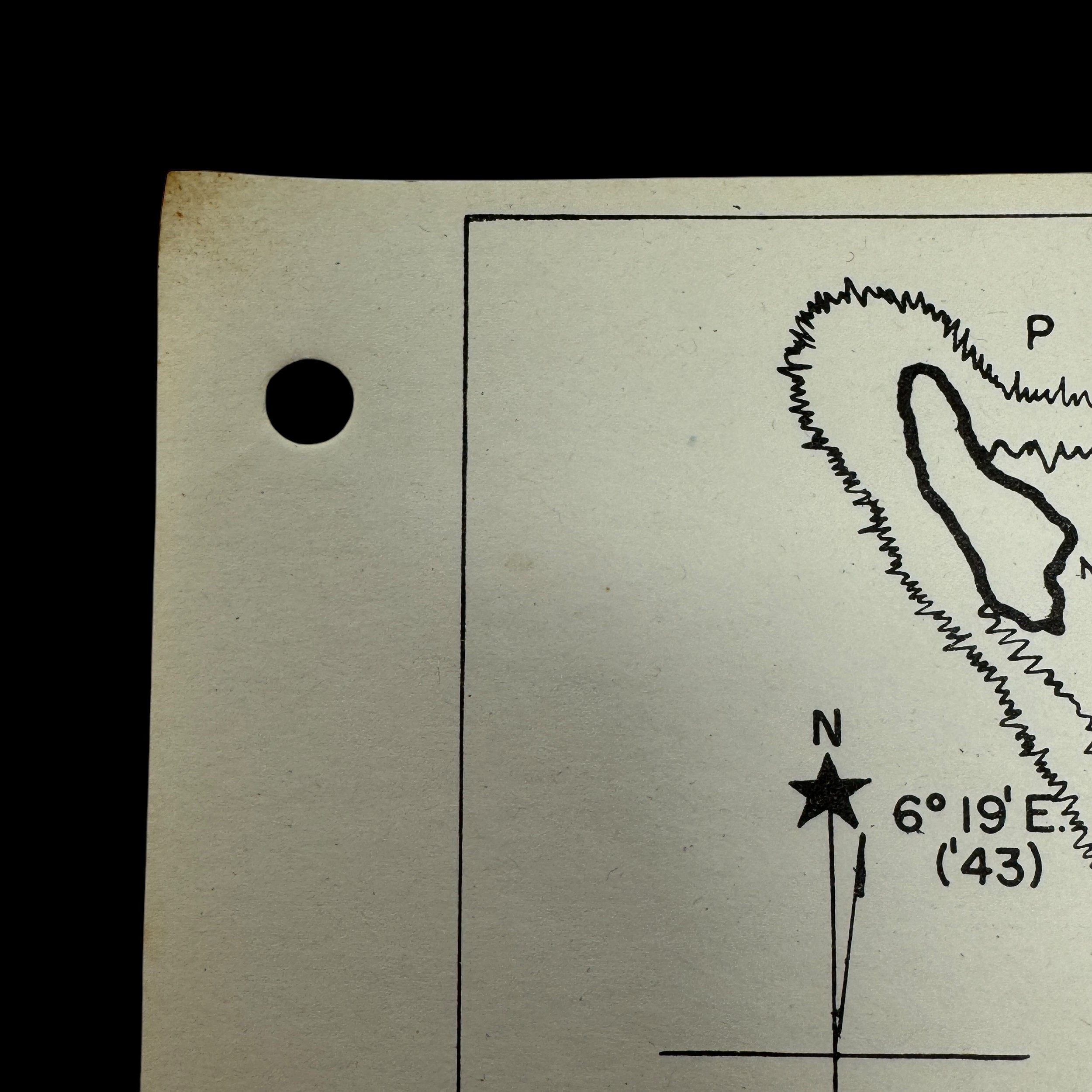
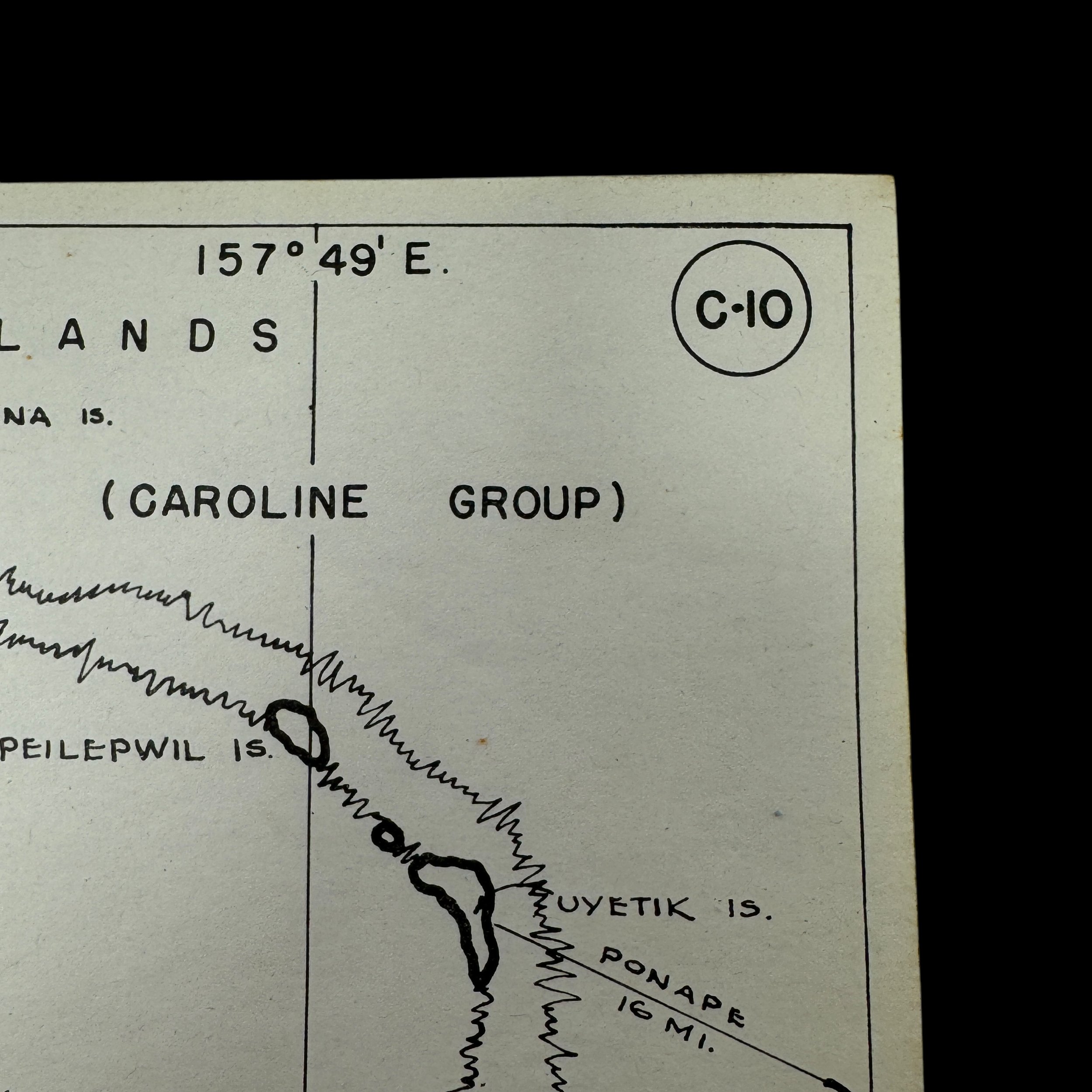
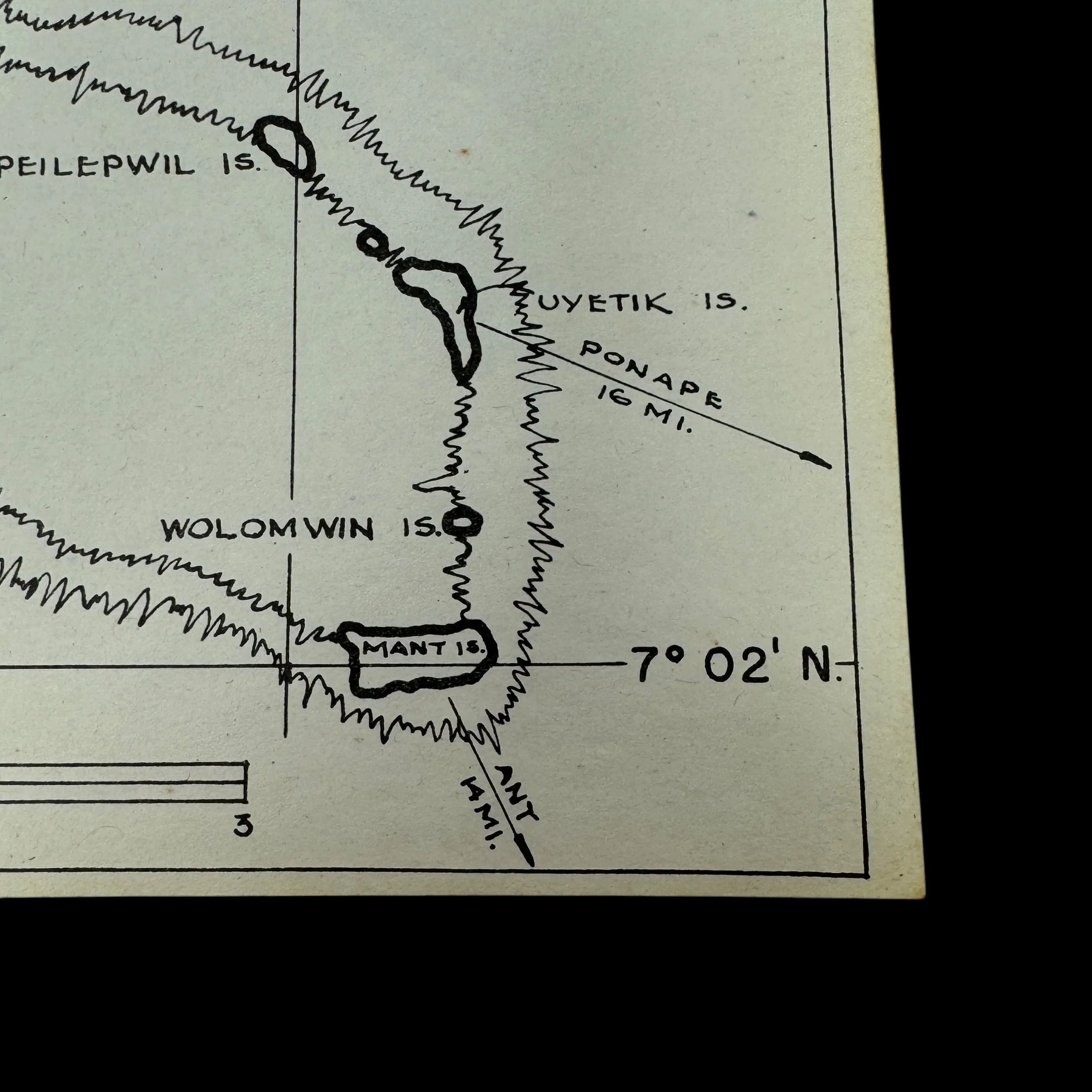
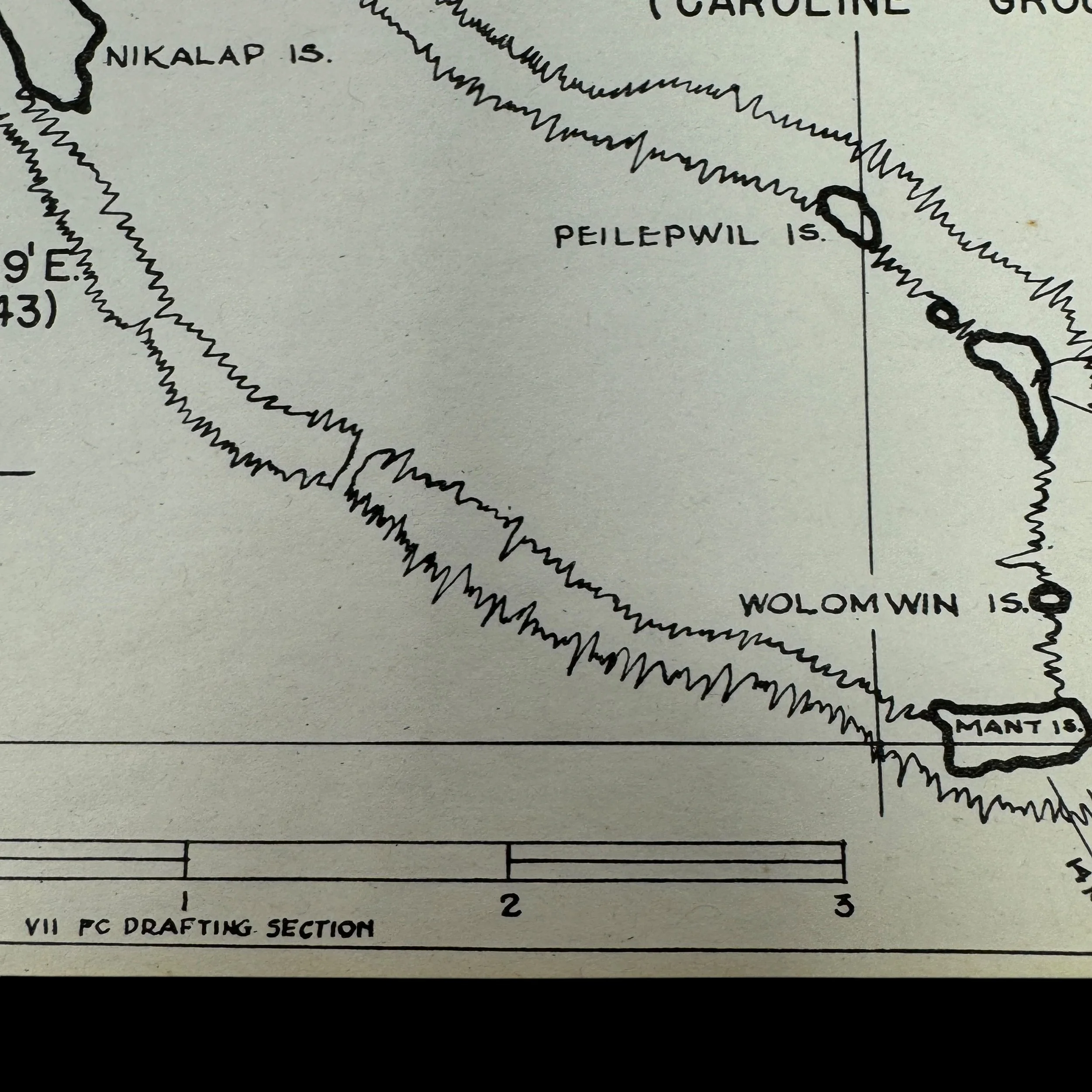
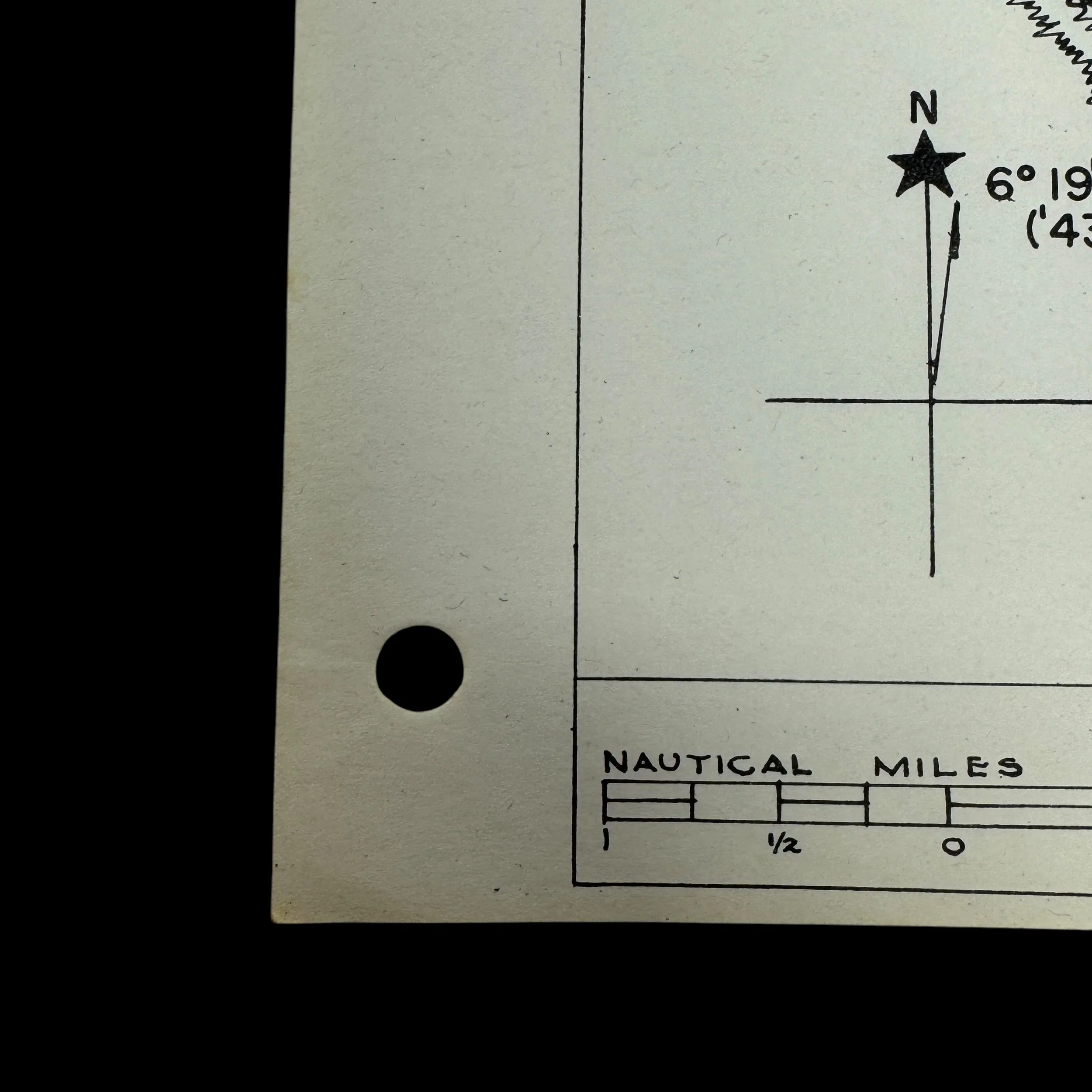

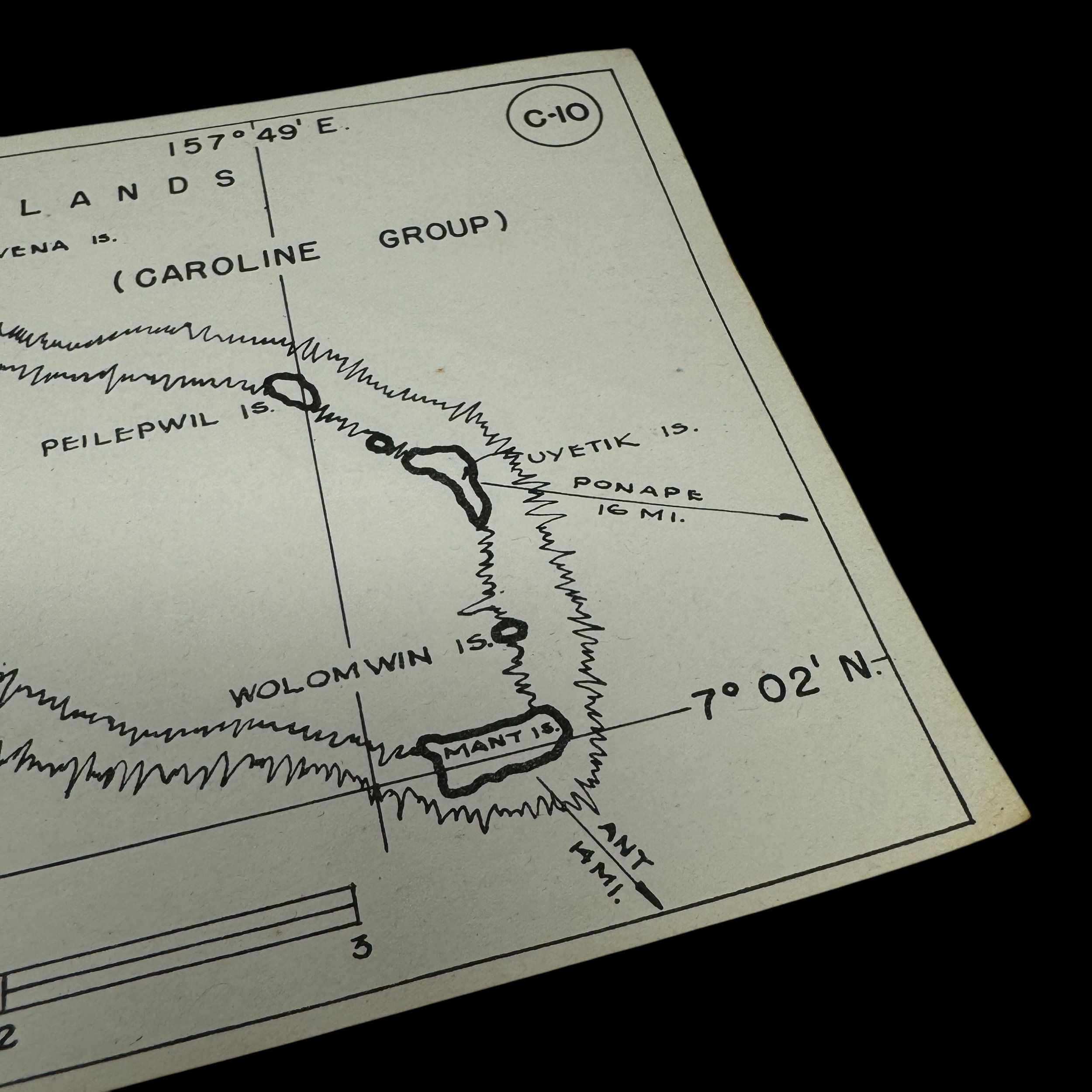
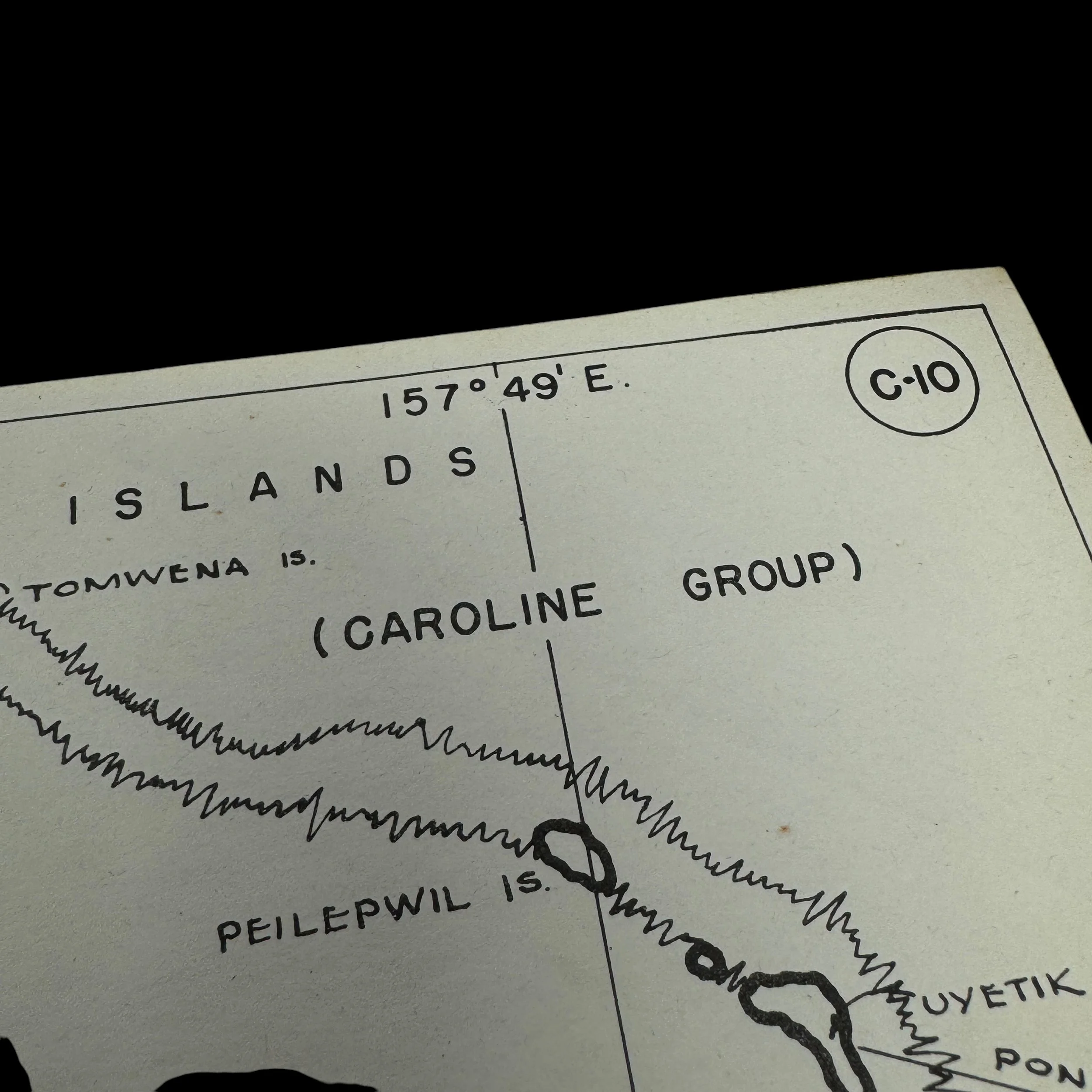
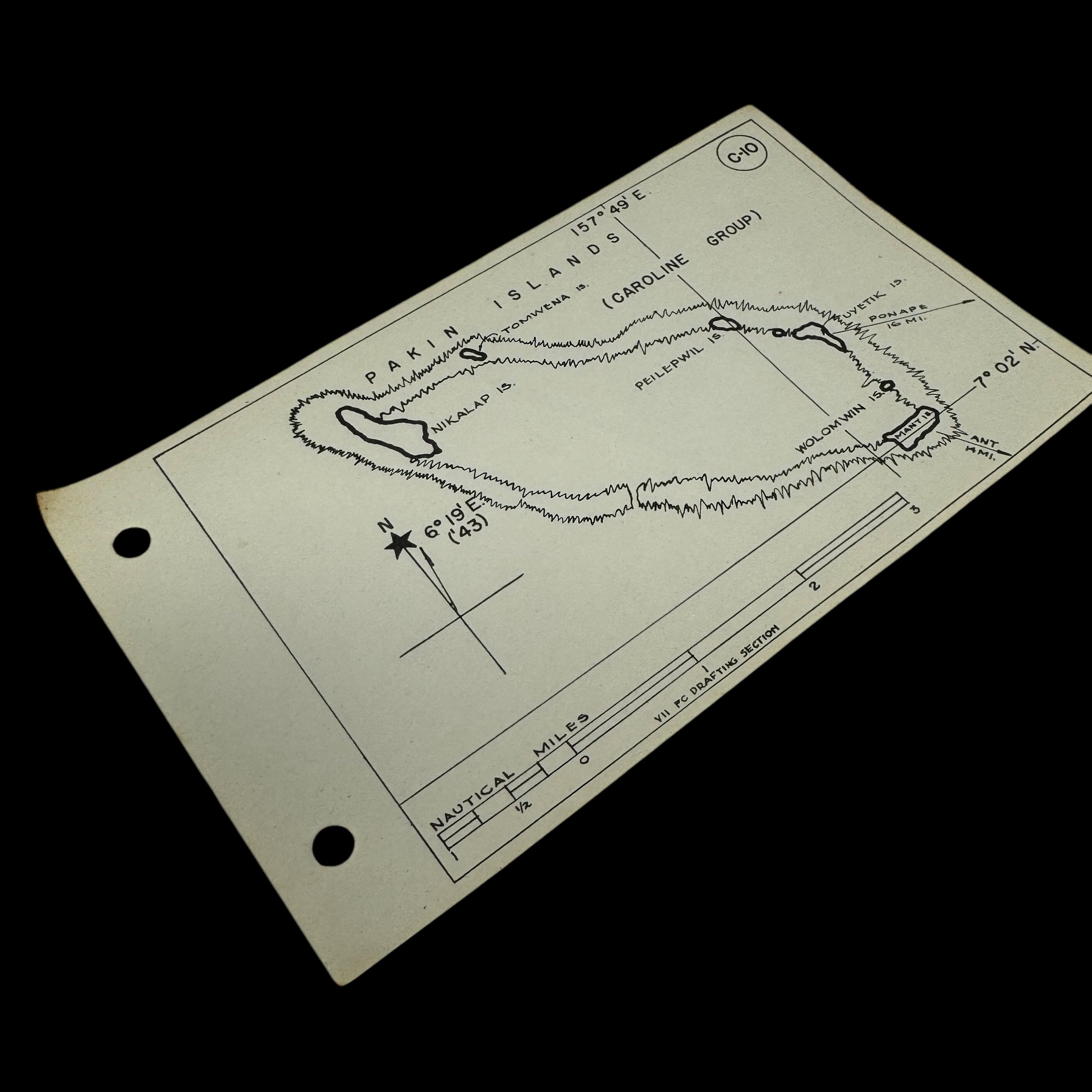
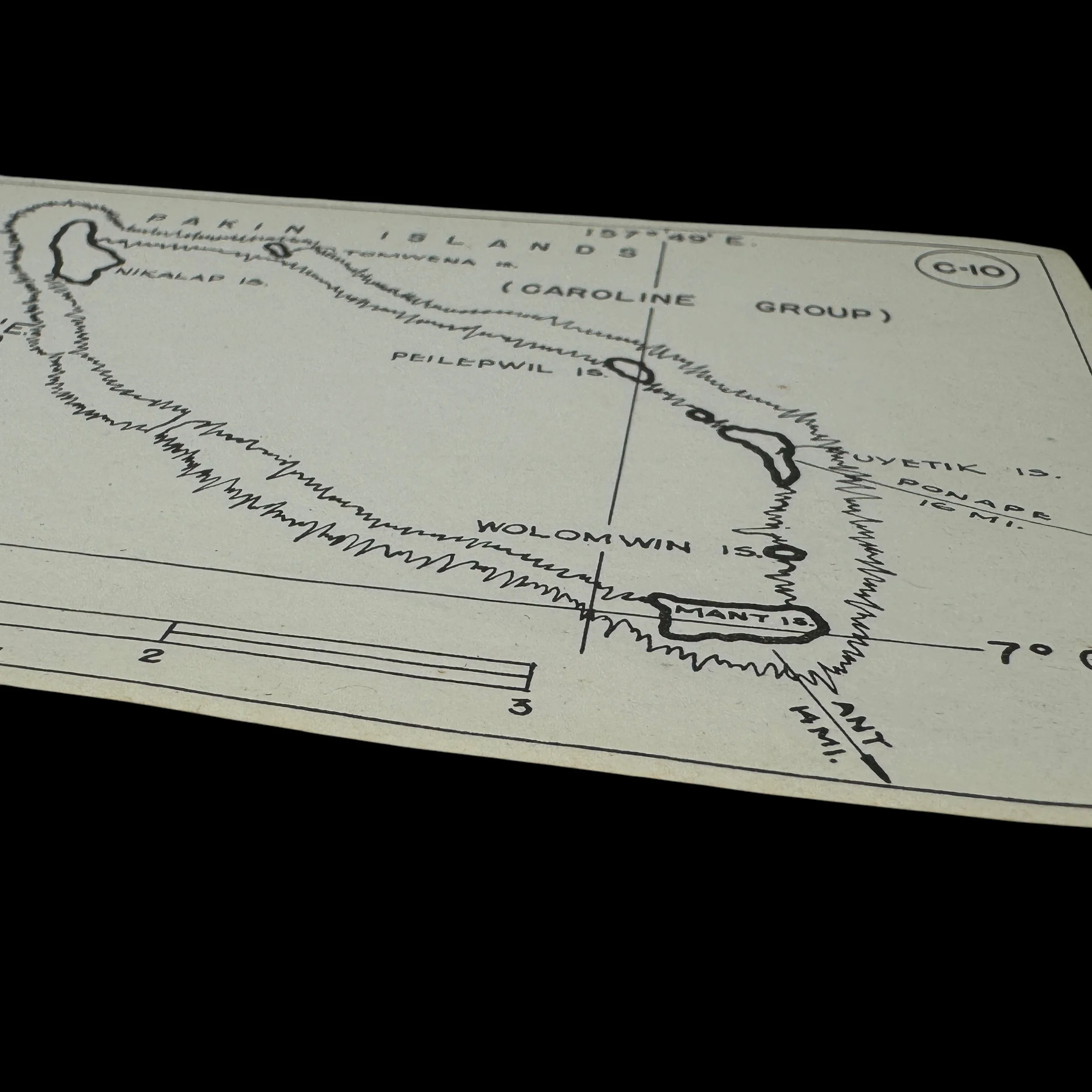
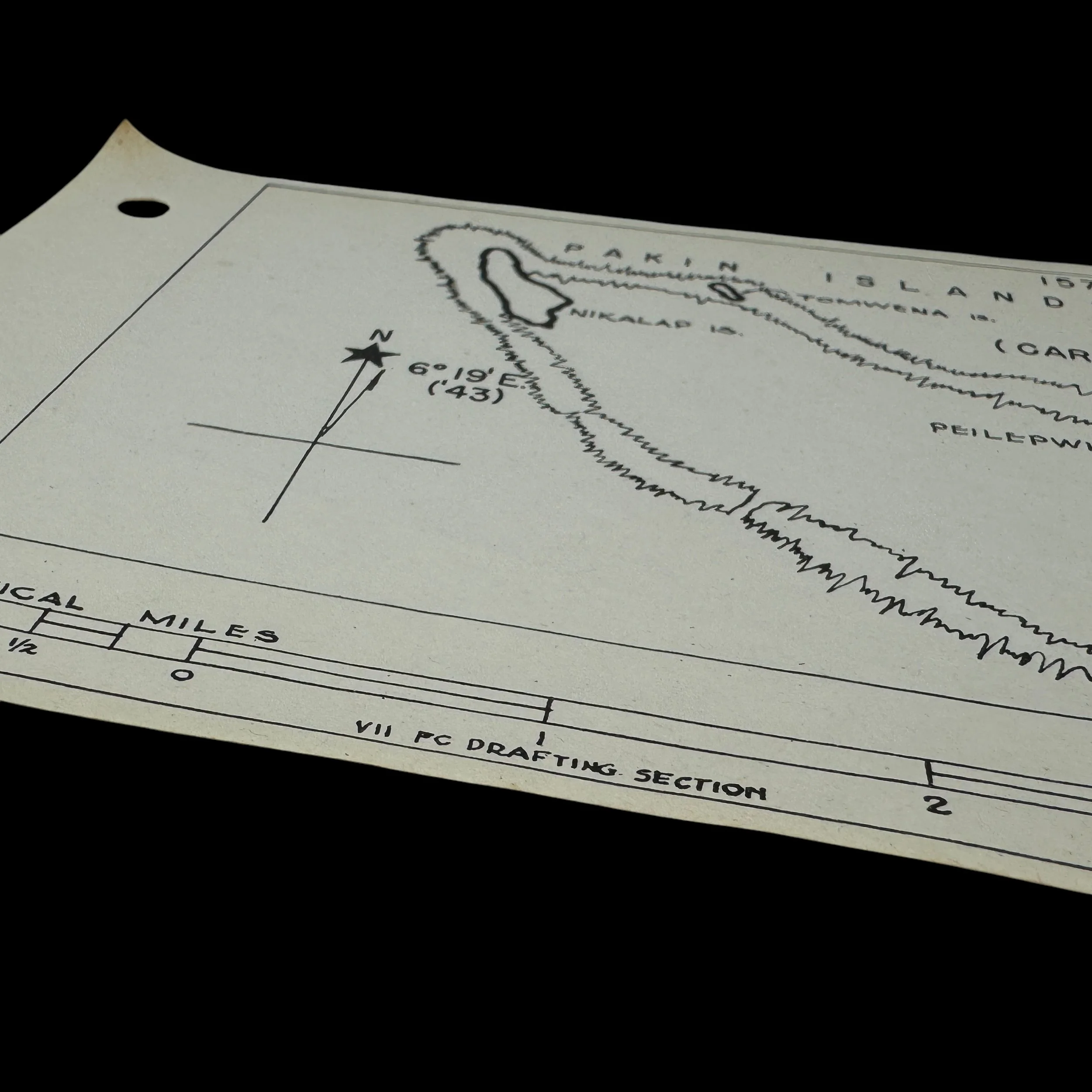


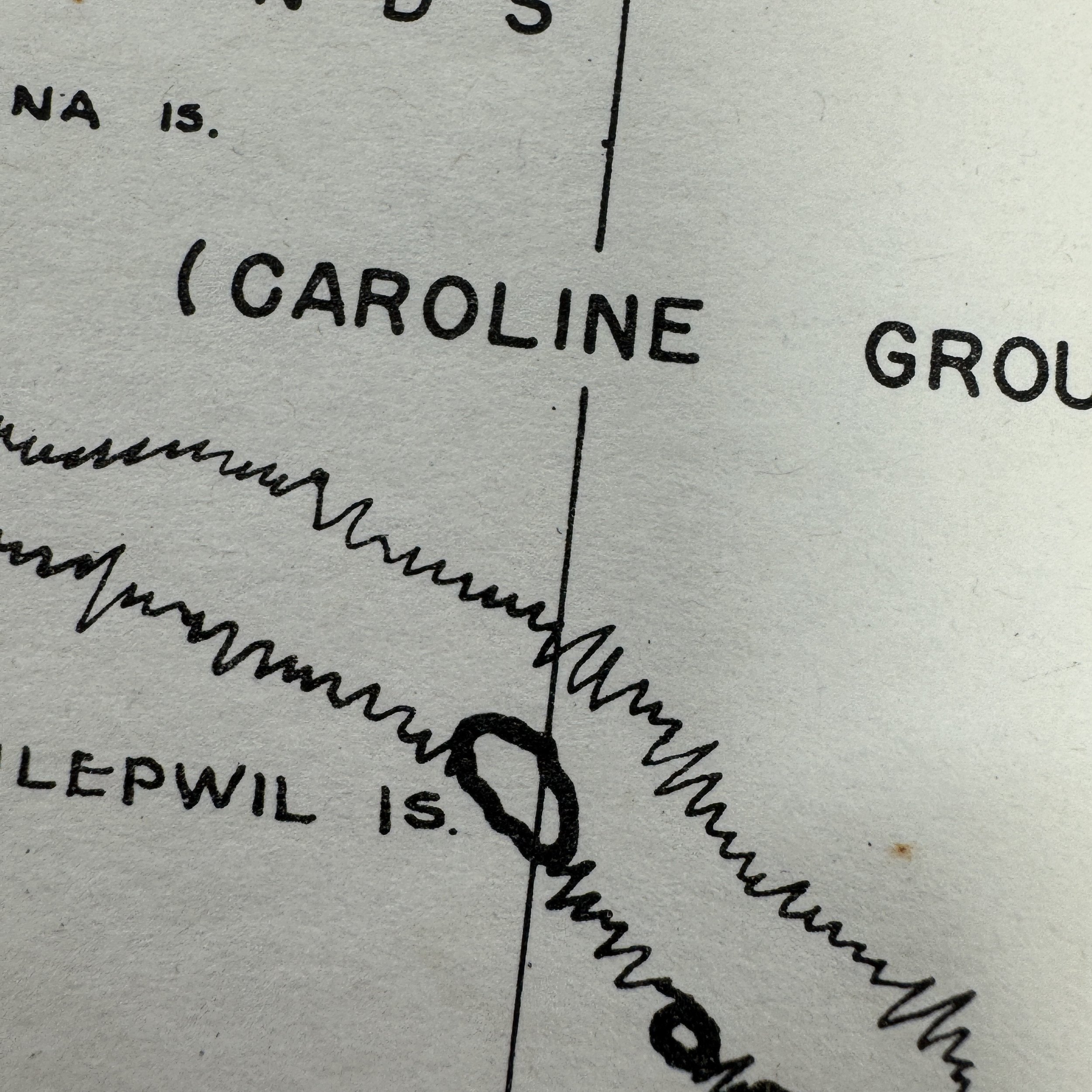
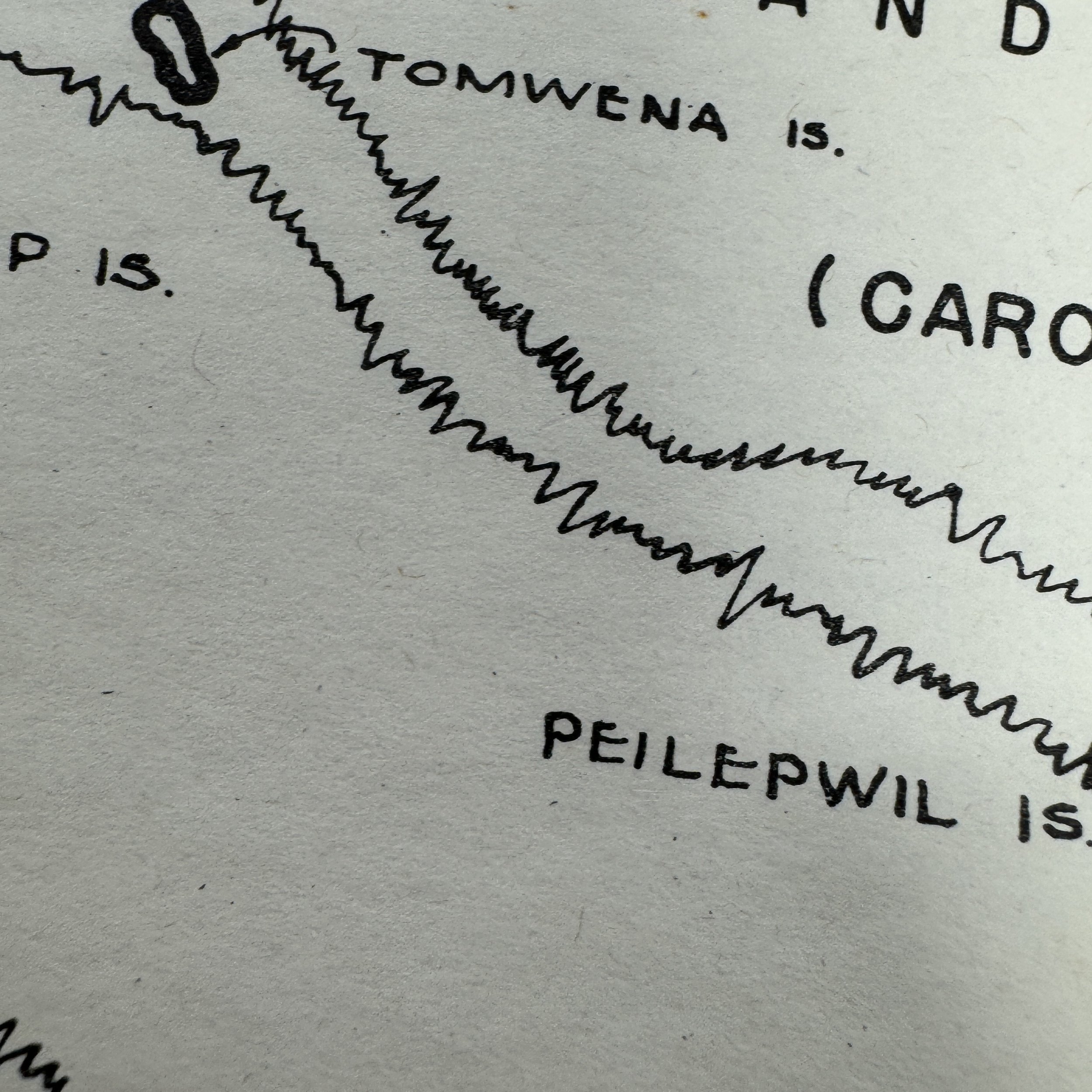
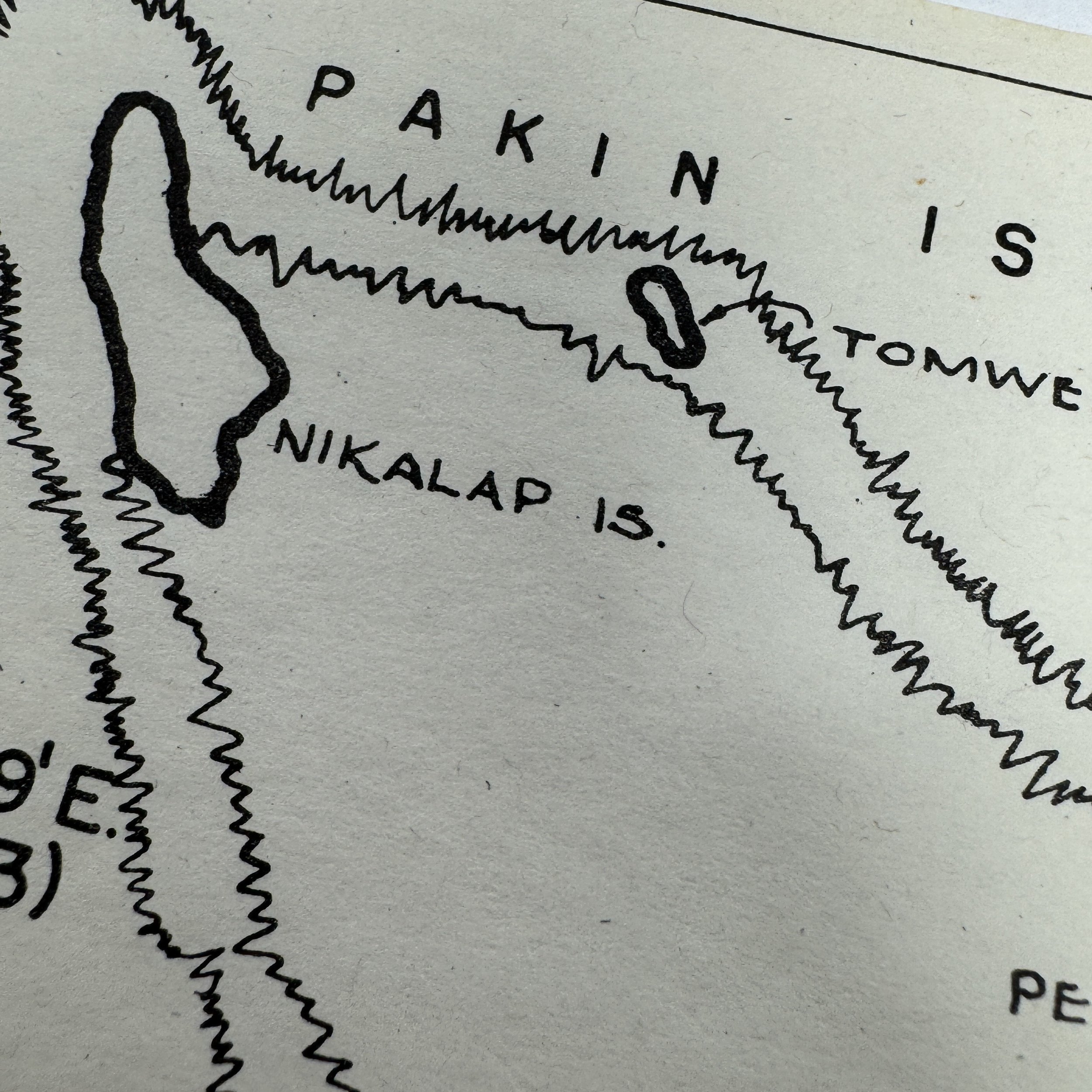


RARE! WWII VII Fighter Command P-51 Mustang Pilot Pakin Islands (Caroline Group) "Kneepocket" Flight Combat Map
Comes with a hand-signed C.O.A.
“As part of the Seventh Air Force, the VII Fighter Command P-51 pilots were instrumental in securing U.S. air superiority, conducting long-range escort missions, and supporting the strategic bombing campaign against Japan. Their deployment in the Marianas Campaign was pivotal to the success of the island-hopping strategy and the eventual destruction of Japan’s war-making capabilities”
Type: Original World War II VII Fighter Command “Kneepocket" Flight Map Specially Made For P-51 Mustang Pilots of the Seventh Air Force’s VII Fighter Command (Field Printed at VII Fighter Command Forward Operating Airfield in the Pacific Theater)
Titled: Pakin Islands - Caroline Group
Missions directed toward the Pakin Islands typically involved fighter sweeps and ground attack sorties aimed at disrupting Japanese communications and transportation lines between Pohnpei and smaller surrounding atolls. Although Pakin itself did not have a major airfield, it was used intermittently by Japanese forces for seaplane operations and as a resupply and observation point. VII Fighter Command P-51 pilots were tasked with ensuring that the Japanese could not reestablish these logistical links, conducting reconnaissance flights to identify any buildup of forces and attacking any ships or installations observed in the area.
Size: 4 × 7 inches
This incredibly rare, museum-grade World War II artifact is an original combat map used by United States Army Air Forces (USAAF) pilots from the Pacific Theater's VII Fighter Command. Known among pilots as the "kneepocket" map, this essential navigation tool was carried by all P-51 Mustang pilots on every combat mission during the war.
Designed and field-printed by the “VII Fighter Command Drafting Section”, this compact yet detailed map was tailored for the specific challenges faced during long-range escort and reconnaissance missions over the vast Pacific Ocean. It was designed to fit perfectly inside the large knee pocket of a P-51 pilot’s flight suit, ensuring easy access without interfering with cockpit controls during combat missions.
The kneepocket map was vital during missions, whether escorting B-29 Superfortresses on Very Long Range (VLR) bombing runs to Japan, or conducting fighter sweeps and reconnaissance. Pilots used this map while in the air to track their positions, coordinate formation movements, and record real-time intelligence on enemy activity and potential targets.
Additionally, the map played a crucial role in emergency planning, providing vital information about nearby islands for potential crash landings. In a theater where engine failure, damage from enemy fire, or fuel shortages posed constant threats, the kneepocket map could mean the difference between survival and being lost at sea.
As a field-produced document, each map was unique, and only a handful of examples with direct connections to the VII Fighter Command have survived, with most reserved for high-end museum archives. Today, these original VII Fighter Command combat maps are exceedingly rare artifacts of WWII aviation history.
VII Fighter Command and the P-51 Mustang Missions Over the Pakin Islands: A Crucial Step in the Pacific Air Campaign, 1944–1945
The VII Fighter Command, an integral unit of the U.S. Army Air Forces during World War II, played a crucial role in the Pacific Theater, executing a series of vital missions in the central Pacific region that contributed significantly to the Allied advance toward Japan. Initially formed to provide air defense for the Hawaiian Islands following the attack on Pearl Harbor, the VII Fighter Command's role evolved dramatically by 1944–1945, transitioning into a more offensive force tasked with long-range fighter operations. Among its many areas of operation, the Caroline Islands, specifically around Pakin Atoll, became a focus of strategic activity. The missions carried out by the P-51 Mustang pilots of the VII Fighter Command in and around the Pakin Islands highlight a critical chapter of the command's wartime service, marked by innovation, endurance, and tactical superiority.
By mid-1944, the Caroline Islands had become a central target in the American island-hopping campaign designed to capture key positions and bypass heavily fortified Japanese strongholds. The broader objective was to secure airfields and naval bases close enough to launch future operations against the Philippines and ultimately Japan. The Pakin Islands, part of the Caroline Group situated just west of Pohnpei (Ponape), were among the strategic locations that offered the Japanese forces anchorage and a limited but important logistical foothold. Although not as heavily fortified as other Caroline Island groups like Truk Lagoon, Pakin's proximity to Pohnpei and its location along vital sea lanes made it a necessary target for Allied air operations seeking to neutralize Japanese movement and supply efforts.
The VII Fighter Command's transformation into an offensive force coincided with the introduction of the long-range P-51 Mustang, which significantly expanded their operational capabilities. The P-51D model, which became the standard in late 1944, was particularly suited to the Pacific environment. Its extended range, superior speed, and high-altitude performance allowed VII Fighter Command pilots to conduct deep-penetration missions that had previously been impossible. Operating from forward bases in the Marshall Islands, particularly Majuro, Kwajalein, and later Eniwetok, the VII Fighter Command launched long-range fighter sweeps, bomber escort missions, and strafing runs against Japanese positions throughout the central Pacific, including the vicinity of Pakin Atoll.
Missions directed toward the Pakin Islands typically involved fighter sweeps and ground attack sorties aimed at disrupting Japanese communications and transportation lines between Pohnpei and smaller surrounding atolls. Although Pakin itself did not have a major airfield, it was used intermittently by Japanese forces for seaplane operations and as a resupply and observation point. VII Fighter Command P-51 pilots were tasked with ensuring that the Japanese could not reestablish these logistical links, conducting reconnaissance flights to identify any buildup of forces and attacking any ships or installations observed in the area.
The fighter pilots faced considerable challenges in executing these missions. Long hours over vast stretches of open ocean tested the endurance of both men and machines. Navigation errors, mechanical failures, and unpredictable weather patterns posed a constant threat. The pilots of VII Fighter Command adapted by developing specialized navigation techniques, including the use of "island hopping" visual landmarks and strict radio communication protocols to maintain unit cohesion across hundreds of miles of empty sea.
Typical operations around Pakin included low-level strafing attacks on Japanese barges, anti-shipping strikes against any convoys spotted attempting resupply operations to or from Pohnpei, and reconnaissance sweeps to assess Japanese activities. When opportunities arose, P-51 pilots also attacked supply dumps, observation posts, and small installations suspected of harboring Japanese forces. These missions were often conducted in concert with larger bombing raids executed by Seventh Air Force B-24 Liberators, with the Mustangs flying protective screens or conducting follow-up attacks to ensure maximum disruption.
One of the defining characteristics of VII Fighter Command's operations during this period was the emphasis on complete aerial dominance. By late 1944, Japanese air power in the Caroline Islands had been severely weakened, but occasional encounters with enemy aircraft still occurred. VII Fighter Command pilots had to maintain constant vigilance, particularly against small groups of determined Japanese fighters based out of Pohnpei or operating from seaplane bases hidden among the islands. When engagements did occur, the superior performance of the P-51, combined with the increasingly experienced American pilots, usually resulted in overwhelming victories for the VII Fighter Command.
The missions over the Pakin Islands also served an important strategic purpose beyond immediate tactical gains. By maintaining pressure on outlying Japanese positions, VII Fighter Command contributed to the broader Allied objective of isolating major strongholds like Truk and Pohnpei without the need for costly direct assaults. This strategy of isolation and attrition allowed the Allies to concentrate resources on more strategically critical campaigns, such as the liberation of the Philippines and the eventual assaults on Iwo Jima and Okinawa.
The daily life of the VII Fighter Command pilots involved in these missions was marked by a combination of monotony, danger, and professionalism. Pre-mission briefings focused heavily on weather reports, target identification, fuel management, and emergency procedures for ocean ditching. Once airborne, pilots often flew for five to seven hours at a time, frequently without visual contact with either the enemy or their own side except during brief periods over target zones. The psychological strain of constant overwater operations was immense, and the pilots relied heavily on discipline, training, and the camaraderie built among their squadrons to endure these arduous missions.
As 1945 progressed, the role of the VII Fighter Command expanded further with the capture of Iwo Jima, which provided a new forward base for long-range escort missions to Japan itself. Nevertheless, the operations in the central Pacific, including those around the Pakin Islands, laid the groundwork for these later successes. The skills honed in the long-range missions over the Carolines—navigation, endurance flying, and precision ground attack—proved invaluable when VII Fighter Command units transitioned to their new roles supporting B-29 bombing raids against the Japanese home islands.
In retrospect, the missions flown by the VII Fighter Command's P-51 pilots around Pakin and the Caroline Islands represented a critical, if sometimes overlooked, contribution to the overall Pacific campaign. These operations demonstrated the flexibility, resilience, and tactical innovation that became hallmarks of American air power in World War II. By neutralizing potential threats, interdicting Japanese supply routes, and asserting air superiority over vast and remote expanses of the Pacific, the VII Fighter Command helped pave the way for the final stages of the war and the eventual victory over Japan.